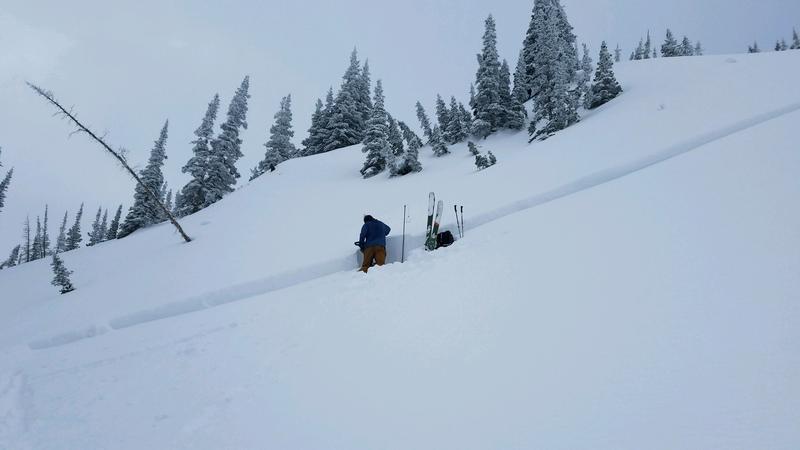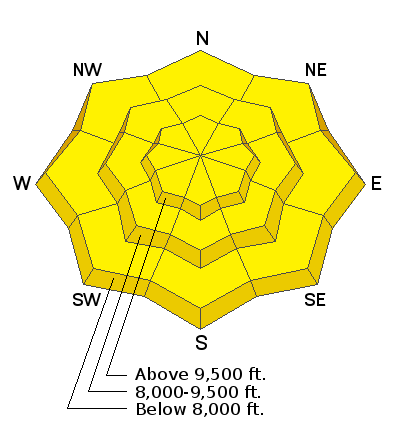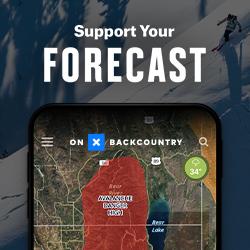The chance of triggering an avalanche today is generally Low, but there are enough concerns, especially with unpredictable spring weather, that warrant your careful attention today:
Wind Drifted Snow - Yesterday, my partner and I (
observation) were finding isolated pockets of fresh wind drifts that were generally unreactive to ski cuts. But the 4-6 hour window of northwest winds last evening may have created additional pockets of fresh wind drifts which may be reactive today. You are most likely to find any recent wind drifts along upper elevation ridges, especially on any aspects facing north, through east, and south. These drifts may be up to 12-18" deep.
New Snow - The 2-3' of storm snow has settled into a dense, cohesive slab, and it has bonded well to the old snow surface. On Wednesday, several observers were finding the weakest snow to be a density inversion which can now be found about 12-18" down into the storm snow. Although most observations now indicate this density inversion has settled out, yesterday's skier-triggered slide in Mineral Fork (photo below pic:Torrey/Hawley) is a reminder this layer may still be reactive in isolated areas. Finally, lthough any new snow amounts today are likely to be small, sluffing in storm snow is possible during any extended period of heavy precipitation.

Wet Snow - Clouds, cool temperatures, and snow showers should prevent wet activity today, but if the sun peeks out for any extended period or you notice greenhousing (where clouds trap warmer temperatures), you can expect the storm snow to quickly become reactive. This includes both wet loose sluffs as well as larger wet slabs. I would be especially aware of this problem on steep sunny aspects as well as all aspects at lower elevations. Watch for rapid changes in the snow surface such as rollerballs, and have an exit plan that allows you to quickly respond to wet snow activity.
Finally, although several glide avalanche paths have already run, rain and warm temperatures earlier this week may have added the necessary ingredients for further glide avalanche activity. Common places to find glide avalanches are Broads Fork, Stairs Gulch, and Mill B South, and upper Raymond Slabs in upper Porter Fork. Of all the different avalanche problems, glide avalanches are the most difficult to forecast as they can avalanche seemingly random times. With an abundant snowpack throughout the range providing plenty of options, the solution to this problem is pretty easy, and I personally am simply avoiding terrain that involves the risk of glide avalanches. Problem solved.








